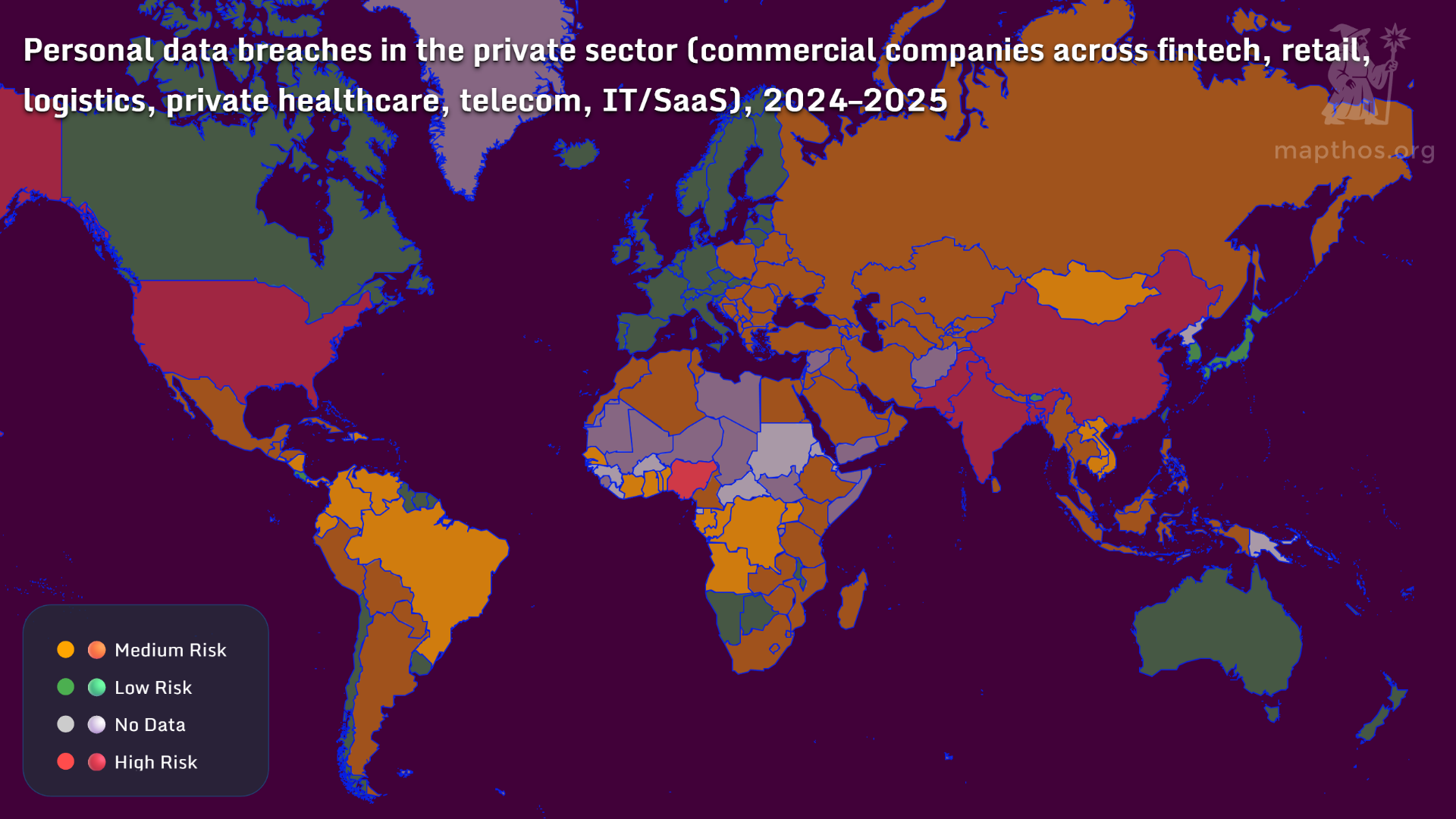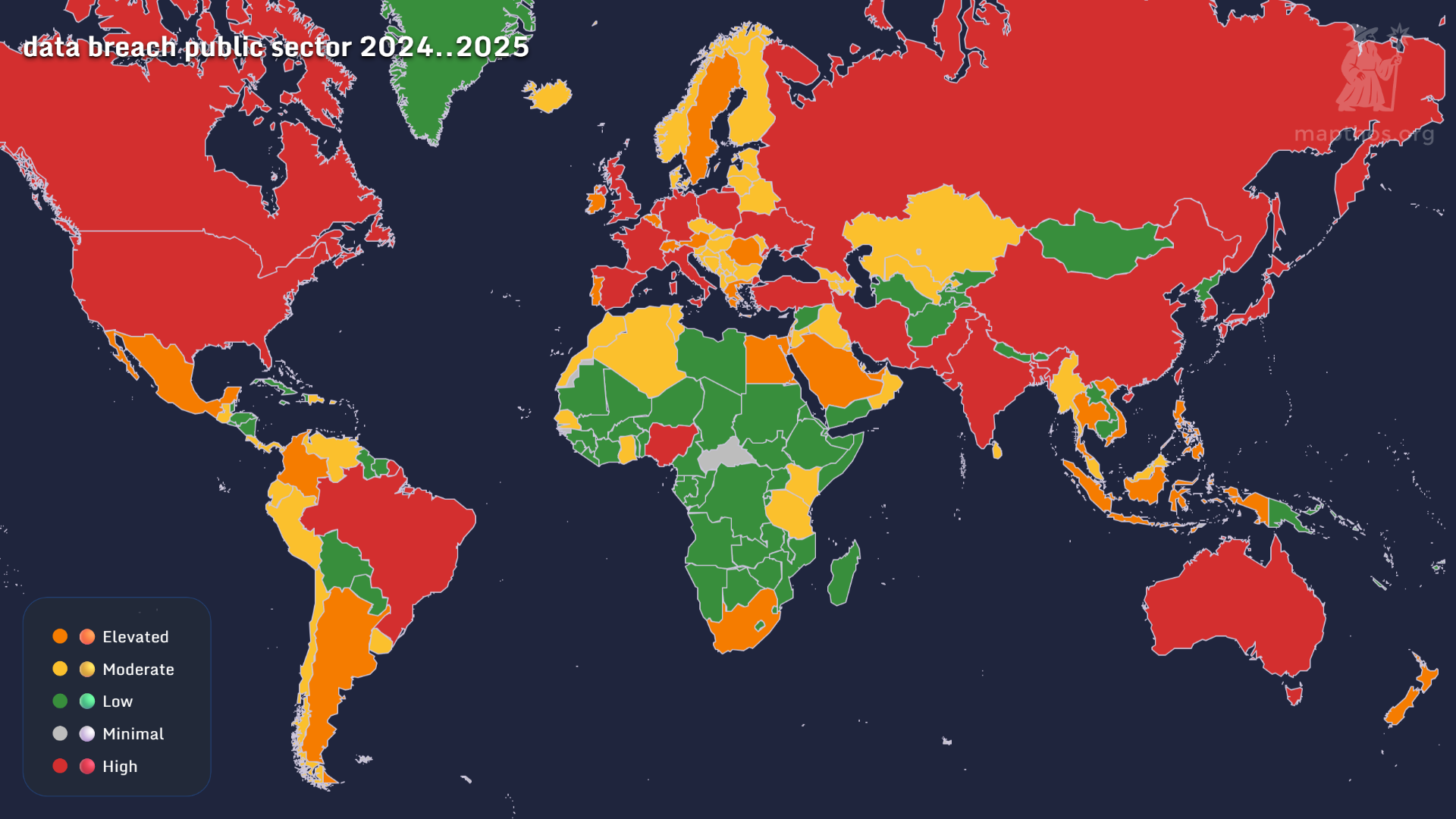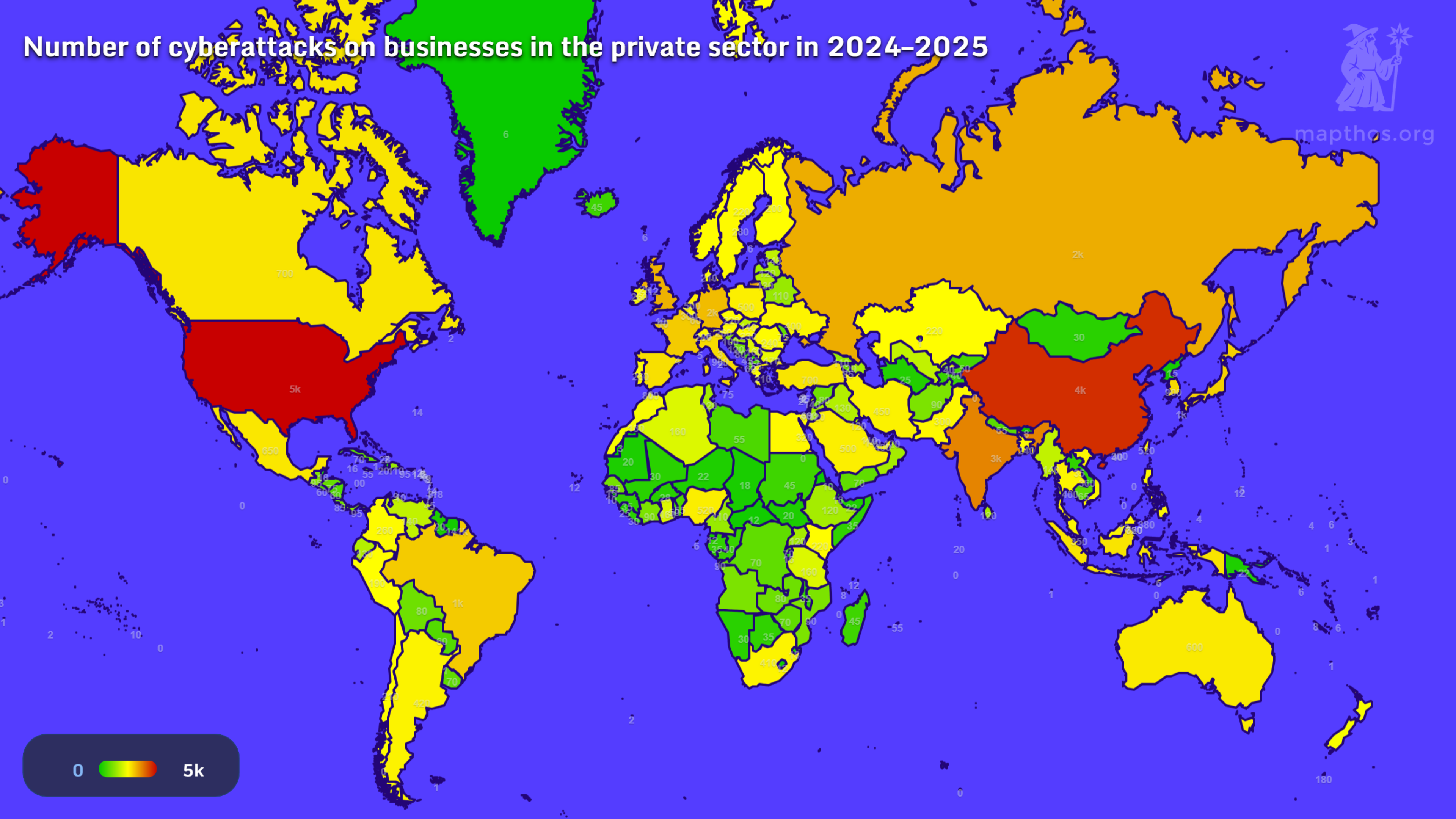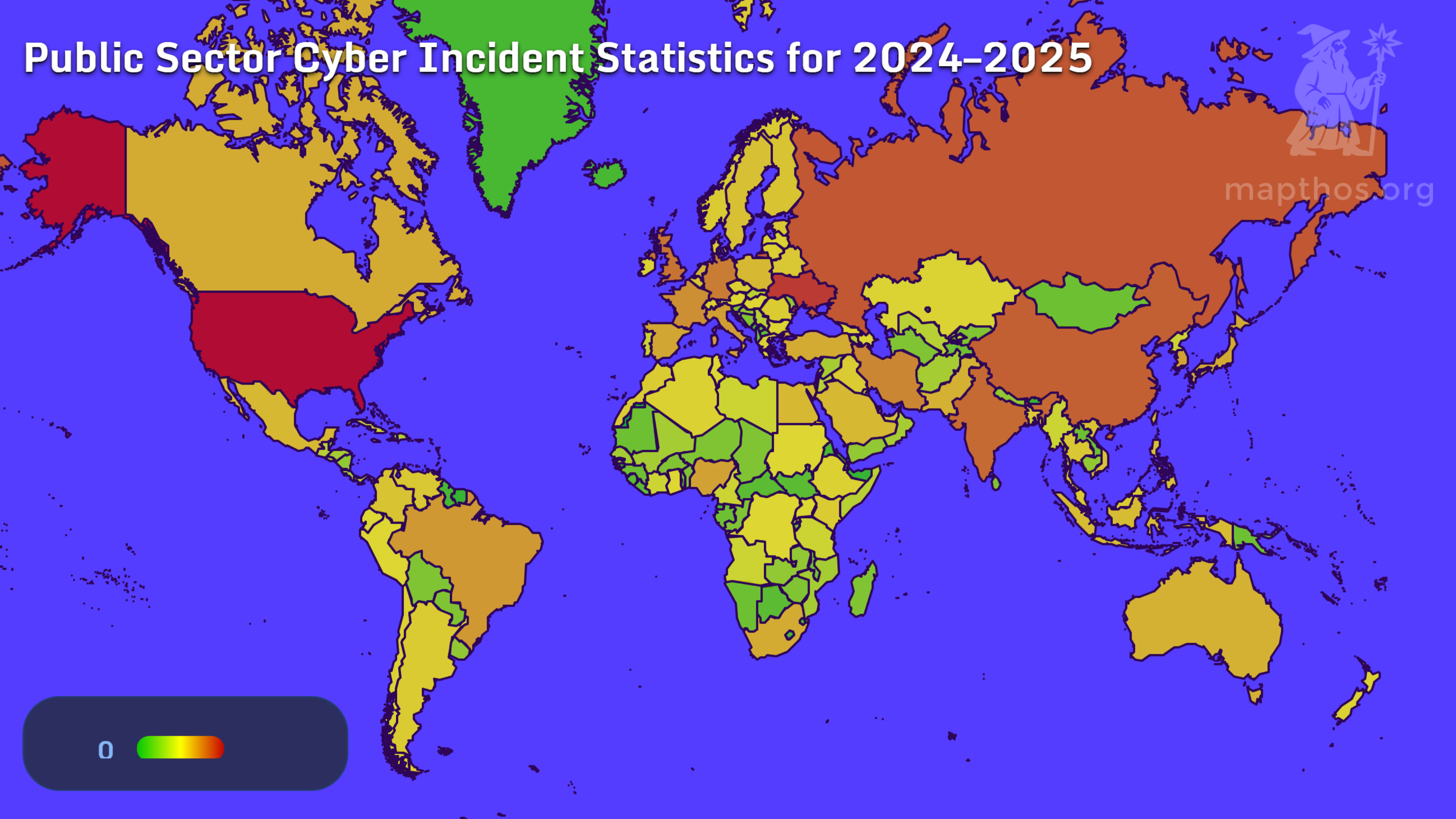🛰️ Mapping the Cyber Frontlines: Global Data Breaches and Attacks 2024–2025

In 2025, the world’s most critical battlefields are invisible. They live in server rooms, cloud networks, and the fragile links connecting global trade, healthcare, and governance. Every click, every port, every login has become a potential fault line.
Welcome to the Mapthos Global Cybersecurity Atlas 2025 — a panoramic look at how data breaches and cyberattacks have redrawn the world’s risk geography.
💼 Personal Data Breaches in the Private Sector (2024–2025)

Retail, fintech, logistics, and healthcare firms are under unprecedented pressure. The United States, China, and India emerge as high-risk zones, reflecting both their digital scale and their fragmented data protection systems. Meanwhile, Northern Europe and Oceania appear low-risk, benefiting from robust privacy frameworks and rapid response infrastructure.
Across Latin America and Sub-Saharan Africa, medium risk dominates — regions rapidly digitizing without equivalent cybersecurity investment.
🏛️ Public Sector Data Breaches (2024–2025)

Governments — once bastions of control — are now frequent victims. The Mapthos public sector data breach map shows that North America, Europe, and Russia faced elevated to high breach rates, while Africa and parts of Asia maintained low-to-moderate levels, largely due to lower digital exposure.
Interestingly, Scandinavian nations stand out as rare “green zones,” showing that transparent governance and strong data ethics reduce vulnerabilities even at high digital density.
✈️ Cyberattacks on Transport Infrastructure (2024–2025)

Airports, seaports, and railway systems became prime cyber targets. The Mapthos transport cybersecurity layer indicates widespread high-risk clusters across the U.S., Western Europe, and East Asia — regions where logistics and aviation IT systems are deeply integrated.
In contrast, Africa and parts of Latin America report lower risk levels, partly due to less interconnected transport IT networks — a paradoxical form of safety through underdevelopment.
🏢 Private Sector Cyberattack Frequency (2024–2025)

Measured by incident volume, the U.S. surpasses 5,000 recorded cyberattacks, followed by China (4,000) and Russia (3,000). European states show mid-range values, typically 100–300 attacks annually, reflecting tighter regulatory controls. Meanwhile, emerging economies show fewer recorded incidents — not necessarily due to safety, but often due to underreporting and lack of cyber forensics.
🧭 Public Sector Cyber Incidents Overview (2024–2025)

Governments across Eastern Europe, the U.S., and Australia lead in incident frequency. These are nations where digital infrastructure is both advanced — and thus, exposed. Africa’s green zones again remind us that sometimes, being offline is the best firewall.
🌐 The Unequal Geography of Cyber Risk
The 2025 dataset paints a world where digital maturity does not guarantee security. Advanced economies fight constant battles against data theft, ransomware, and state-level espionage, while developing nations risk becoming the next frontier of cyber exploitation as they digitize essential services.
In the end, cybersecurity isn’t just about defense — it’s about digital empathy, shared responsibility, and map-based awareness. Because in a hyperconnected planet, the weakest link can be anywhere — and affect everyone.
👉 Explore more at app.mapthos.org
See the world. Map better. Dream big. 🌍✨